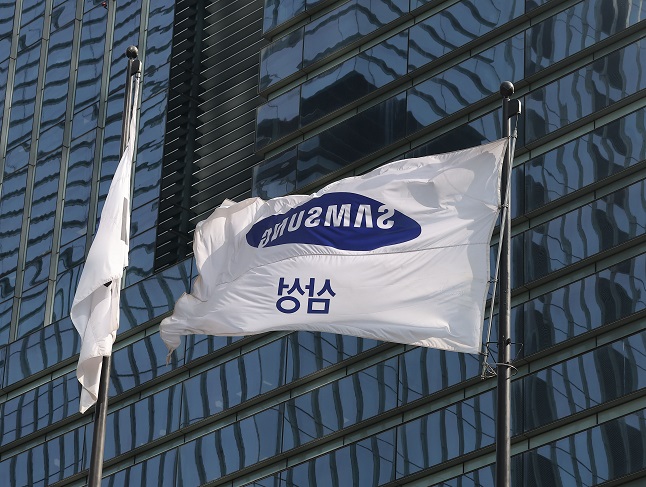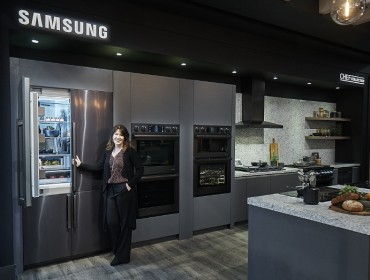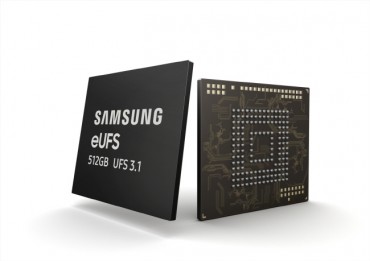
A woman passes by an ad for Galaxy S23 smartphones at a Samsung Electronics shop in Seocho, southern Seoul, in the April 7, 2023, file photo. (Yonhap)
SEOUL, April 27 (Korea Bizwire) – Samsung Electronics Co. on Thursday reported its worst quarterly profit in 14 years, as global economic woes dented demand for consumer electronics and a chip glut battered its core business.
The world’s largest memory chip and smartphone maker reported operating profit of 640.2 billion won (US$478 million) during the January-March period, falling 95 percent from the 14.12 trillion won it posted a year ago.
Its first-quarter net income came to 1.57 trillion won, down 86.1 percent from a year earlier. Sales fell 18 percent to 63.74 trillion won.
Samsung’s Device Solution (DS) division, which oversees its chip business, posted a deficit of 4.58 trillion won, in its first financial loss in 14 years, with chip inventories growing significantly amid tapering global demand.
The last time Samsung saw its core unit making losses was the first quarter of 2009, when the world was emerging from the 2008 financial crisis.
Samsung blamed the poor results on “weak demand,” “a decline in utilization rates in the foundry business” and “inventory adjustments from customers.”
Also the inventory valuation loss, which started to kick in from its NAND flash products in the previous quarter, started to impact DRAM this year, the company said.
“With the additional price decline recently in DRAM, there was a larger inventory valuation loss recognized this quarter and that had an additional impact on our performance,” it said during an earnings call.
Earlier this month, Samsung said it was cutting memory production “to a meaningful level,” in a sharp departure from its previous position that it would not artificially reduce output as part of efforts to gain a bigger market share.
Its smaller rivals like SK hynix and Micron had moved several months earlier than Samsung did and pulled back on production in order to ease a severe supply glut that drove down prices.
During the earnings call, Samsung said it started cutting production of the legacy products that it had already secured sufficient volume of to meet mid-to-long term demand.
The production cut came on top of the factory line optimization that already began early this year, it said.
“We expect the size of the reduction to be far more meaningful,” the chipmaker said, adding that it expected the inventory levels to start to decrease from the second quarter.
“Going forward, we will continue to monitor the market demand and operate our production flexibly. So we expect our inventory normalization speed to accelerate in the second half,” Samsung said.
Market tracker TrendForce said early this year it would take “several quarters of inventory adjustments” and “larger production cuts” by major chipmakers to digest the excessive supply that plagued the industry, and to leave behind the downturn phase.

Seen here is the headquarters of Samsung Electronics Co. in southern Seoul on April 27, 2023. (Yonhap)
Samsung forecast the global chip market will shrink 6 percent on-year to $563 billion this year and warned of difficult conditions continuing throughout the year.
Given the circumstances, the company said it will focus on advancing “technological competitiveness, including the gate-all-around based 2-nanometer process, while meeting demand for DDR5, LPDDR5x and other high-end products” in coming months.
Its Device eXperience (DX) division, which oversees smartphones, TVs, and home appliances, logged improved profits in the first quarter, largely driven by the robust sales of the flagship Galaxy 23 series and premium TVs.
The company said it will work to solidify its leadership in the premium segment, in particular, such as foldable smartphones and Neo QLED screens.
During the first three months of the year, the company’s total capital expenditure reached 10.7 trillion won, up 36 percent from a year ago and a record for a first quarter.
Of the total, 9.8 trillion won was spent on semiconductors and around 300 billion won was spent on display panels.
Spending on memory was concentrated on completing the chip fabrication facilities in Pyeongtaek, 60 kilometers south of Seoul, and foundry investments in global facilities including in Taylor, Texas, “to address demand for advanced nodes,” while “investments in displays focused on infrastructure and module production enhancements,” it said.
Samsung said the Korean won’s strength against the U.S. dollar and euro negatively affected the bottom line by about 700 billion won.
Regarding the U.S. Chips Act, Samsung said it plans to actively engage in the U.S.-led procedures to iron out the details of the obligation clauses of the act and to share with Washington its opinions and feedback.
“The company is currently studying various possibilities and scenarios, and will continue to work on minimizing any geopolitical risks to our business,” it said.
Samsung Electronics shares added 0.78 percent to close at 64,600 won on the main Seoul bourse Thursday, outperforming the broader KOSPI’s 0.44 percent gain.
(Yonhap)






